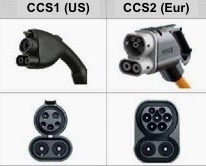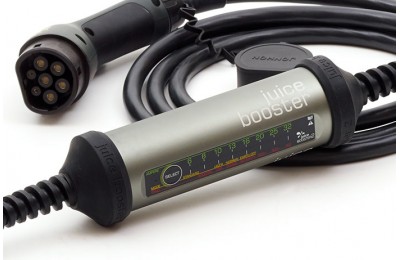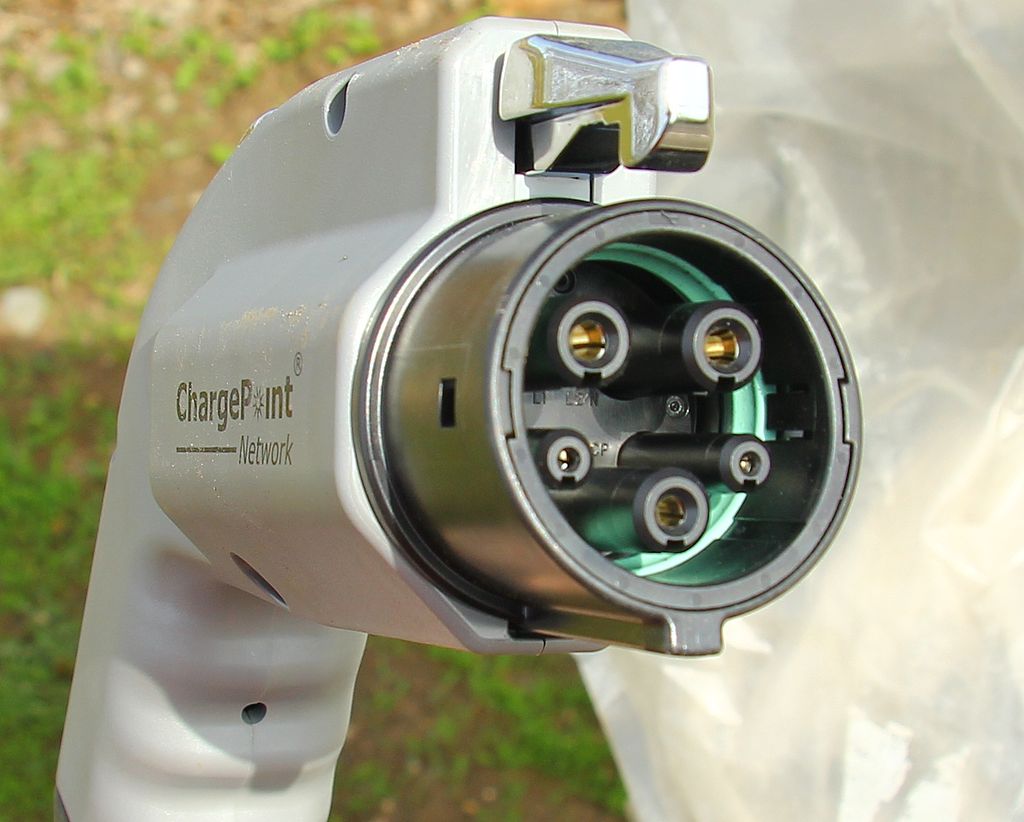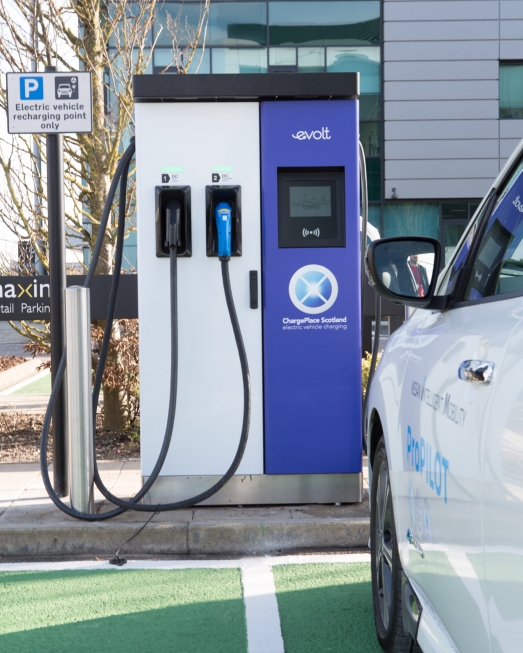Nick Raimo sets out some of the terms and acronyms in the EV world.
Vehicles
- EV Electric Vehicle (EV)
Any electric vehicle using one or more electric motors for propulsion. Three main types exist:
- BEV Battery Electric Vehicle
A battery electric vehicle (BEV) uses only chemical energy stored in rechargeable battery packs.
- HEV Hybrid Electric Vehicle
A hybrid electric vehicle combines a conventional internal combustion engine (ICE) in series or parallel with an electric propulsion system. The electric powertrain can offer improved fuel economy, emissions and performance.
- PHEV Plug in Hybrid Electric Vehicle, see also REX
Much the same as an HEV but as the name implies, you can charge the batteries by, plugging it in. Electric range for these vehicles varies from 10 to 50 miles on electric power.
- HFCEV Hydrogen Fuel Cell Electric Vehicle
In the strictest terms, these are Hybrid Electric Vehicles, as the fuel cell operates as a series power source for a battery or capacitor that in turn supplies the motor. The size of the battery varies and they can also appear as Plug in HFCEVs.
- ZEV Zero Emissions Vehicle
Any vehicle that emits no pollutants from its power source at the point of use. BEV and cycles are ZEV, while HFCEVs do emit water, they are generally considered to be ZEVs.
Everything Else
- AC Alternating Current
The same as supplied to your house. AC chargers come in different power levels, from 2.5kW up to 43kW. When connecting to an AC charge point try and use one that is a similar power level to the charger on your car. See also EVSE.
- Ah Ampere hour
A unit for measuring energy. BMW represents the battery size for the i3 in Ah. Makes it harder to compare to others.
- BCI Battery Charging Impossible
A fun message that can appear on the dashboard in orange box on a Renault Zoe. Frustrating, but not dangerous. Can sometimes be linked to a low 12v battery state or an earth value outside the Zoe's comfort zone.
- BMS Battery Management System
Responsible for protecting the vehicle battery, ensuring safety and longevity. Works with the EVSE to control charging.
- CanZE A third party phone app for the Renault Zoe
A means of learning more about what is going on with your Zoe. Used with an OBD2 dongle.
- CHAdeMO The Japanese DC charging standard
Literally "Charge de Move" but it is a pun in Japanese for "Time for a cup of tea while charging." Uses CANBUS (Controller Area Network) communication, used in Vehicle to Grid V2G applications.
- Charge Point
Any location equipped to supply power for charging an EV. See EVSE
- CCS Combined Charge System
 The common name for the European Type 2 derived DC charge system and the US Type 1 derived DC charge system, using two additional pins under the plug. Uses PLC (Power Line Carrier) communications. V2G under development.
The common name for the European Type 2 derived DC charge system and the US Type 1 derived DC charge system, using two additional pins under the plug. Uses PLC (Power Line Carrier) communications. V2G under development.
- DC Direct Current
The kind of current that a battery provides. DC chargers such as Rapids and DC Fast convert AC current to DC and supply directly to the battery during charging.
This is any infrastructure that supplies electric power to recharge an EV. Mode 2 includes the Granny Charger, an inline 'brick' that allows you to connect the car to a normal household socket. Mode 3 is a dedicated unit that requires purpose made leads and connectors and can supply up to 43kW three phase AC. Mode 4 is DC charging.
- Free Socket An EVSE with no permanently attached cable.
For some it is a more visually appealing installation at home, for others, less convenient. Most public AC chargers fall into this category.
- GOM - guess-o-meter indicating the estimated remaining range
Accuracy may vary based on driving style, weather and terrain.
- Granny Charger
A ubiquitous term for a Mode 2 charger, allowing you charge from a domestic socket anywhere. Typically 2.5kW but some specialist units can deliver 22kW from a suitable outlet.
- ICE Internal Combustion Engine
Inefficient conversion of hydrocarbons or other fuel to motion and heat. Mainly heat.
- ICEd A nuisance.
The term for an ICE vehicle obstructing access to a charge point.
- Inductive Charging No wires between car and charger.
A less efficient, but effortless way of charging. Just like a phone. See also J1773, but will use ground mounted hardware and no cables.
- J-Plug J1772 Plug.
As defined by the Society of Automotive Engineers. Also known as Type 1 or Yazaki
- J1773 An early Inductive charging standard.
Used on the GM EV1 and a few others, you can see it 41 minutes into the movie Gattaca.
- kW kiloWatt
1000 Watts. This is an SI unit of power, used for kettles, motors and lightbulbs (and everything else).
- kWh The SI unit for energy
Exactly the same as the units on your home electricity meter. 1 kWh is the value for 1kW being delivered for 60 minutes. Most vehicles have their battery capacity expressed in kWh. See also Ah.
- LeafSpy- App based software for the Nissan Leaf,
Uses an OBD dongle that connects to the OBD2 port to show you more techie detail and change some settings.
- OBD - on board diagnostics.
Standard protocol for communicating with your vehicles onboard diagnostics.
The protocol that a charge point uses to communicate with the back office function. Ensures that a common platform allows interoperabilty between manufacturers and networks can exist. Exceptional forward thinking.
- Regen- Regenerative braking.
Uses the motor to generate electricity which is then transferred back into the battery. This is why pads and disks on EVs can last a long time, as they don't need much use. Tip: brake hard now and again to help prevent the disks from corroding.
- REX- Range Extender
This is an engine which is used with a generator to recharge the battery which then powers a motor to turn the wheels. A series Hybrid Electric Vehicle.
- Selfcharging Hybrid- A myth.
Requires a fuel source to operate, usually petrol.
- Tesla Destination chargers- Type 2 tethered charge point can be used by any Type 2 vehicle.
A red plaque indicates Tesla only, grey any suitable equipped vehicle.
- Tesla Supercharger- A powerful charger for Teslas.
Large white and red chargers. With CCS and Type 2 tethered leads, both providing DC supply.
- Tethered A charge point with permanently attached cable(s).
All Mode 4 devices are tethered, with many Type 2 home points tethered for convenience. Many public Type 2 ( Level 2) points in America are tethered, also common in Europe.
- SEV - or PV/EV
Solar Electric Vehicle. An EV covered in solar panels.
- SOC - State of Charge
The current charge level of the battery, not necessarily the available capacity.
- SOH - State of Health
The current health of the battery pack in terms of capacity, this will degrade over several years. A relative term, defined by each manufacturer.
- Type 1- AC American plug type used in the USA and Japan.
Found on earlier Nissan Leafs, eNV200s and may still appear on imported cars. Sometimes called Yazaki, an original manufacturer. 
- Type 2- AC/DC Plug and socket system developed by Mennekes.
The EU standard plug and now fitted on all EVs manufactured in the EU. Only Tesla has implemented the DC charge capability that the standard supports, as used at EU Superchargers. Cars have a receptacle(inlet) for a trailing outlet (socket).
- Type 3 An alternate EV charge cable system initially preferred in France and Italy.
Found on some older vehicles. Won't be coming back.
- Yazaki An alternate name for the Type 1 connector. The Yazaki Corp is an automotive supplier who also supplies CHAdeMO components.



